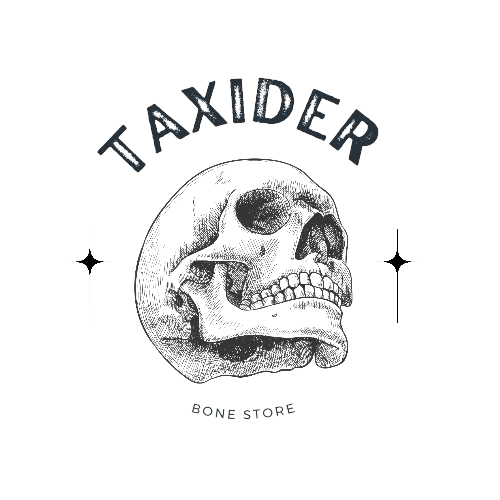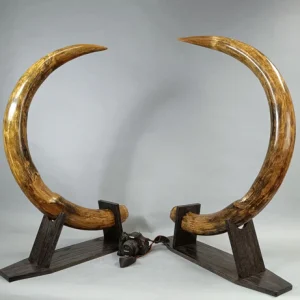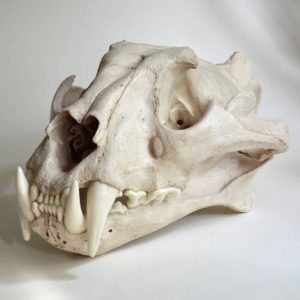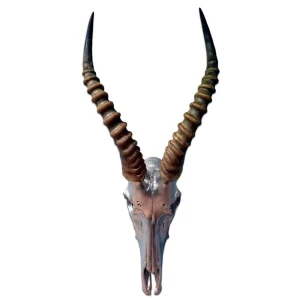Description
Buy Red Wolf Skull Online
The red wolf skull has a distinctive shape that reflects its unique adaptations. Typically, it features elongated facial bones and sharp teeth suited for a carnivorous diet. The skull is relatively narrow, with prominent eye sockets, and the zygomatic arch (cheekbone) is well-defined. The size is smaller than that of the gray wolf, reflecting the red wolf’s more slender build
Certainly! The red wolf (*Canis rufus*) skull provides insights into its biology and ecological role. Here are some key features and aspect
Red Wolf Skull For Sale
Anatomical Features
1. **Cranial Structure**: The skull is elongated, which helps with the sense of smell—an important trait for hunting.
2. **Teeth**: Red wolves have sharp canines and carnassials (the teeth used for shearing meat), indicating their carnivorous diet. Their dental formula helps in catching and consuming prey like small to medium-sized mammals.
3. **Size and Shape**: Generally smaller than gray wolves, red wolves have a narrower skull. This influences their hunting techniques and pack dynamics which is produced in different colors like the red wolf skull for sale as well.
Ecological Role
– **Predator**: As a top predator, red wolves help control populations of smaller mammals, which can influence the ecosystem’s balance.
– **Scavengers**: They also scavenge, contributing to nutrient cycling in their habitats. And being dangerous animals the wolf animal skull for sale also produced from a different version of the normal wolves is available.
Conservation Status
– Red wolves are critically endangered, with significant efforts in place for their conservation. Understanding their anatomy, including skull morphology, is essential for studying their behavior, health, and needs in the wild.
Cultural Significance
– They hold cultural importance in various Indigenous stories and ecosystems, symbolizing wilderness and the balance of nature.
Buy Red Wolf Skull Online Fast Delivery
Of the estimated 300 red wolves in existence, approximately 200 reside in captivity and 100 are living in the wild. In 1967 the red wolf was officially listed as an endangered species and by 1980 was considered extinct in the wild. However, in 1973 the U.S. Fish and Wildlife Service started a captive breeding program.
Of the 17 remaining true red wolves, only 14 successfully bred in captivity. In 1987 four pairs were re-introduced to the wild in North Carolina. Today, there are more than 50 red wolves in this area. 2-part skull (separate cranium & jaw).







